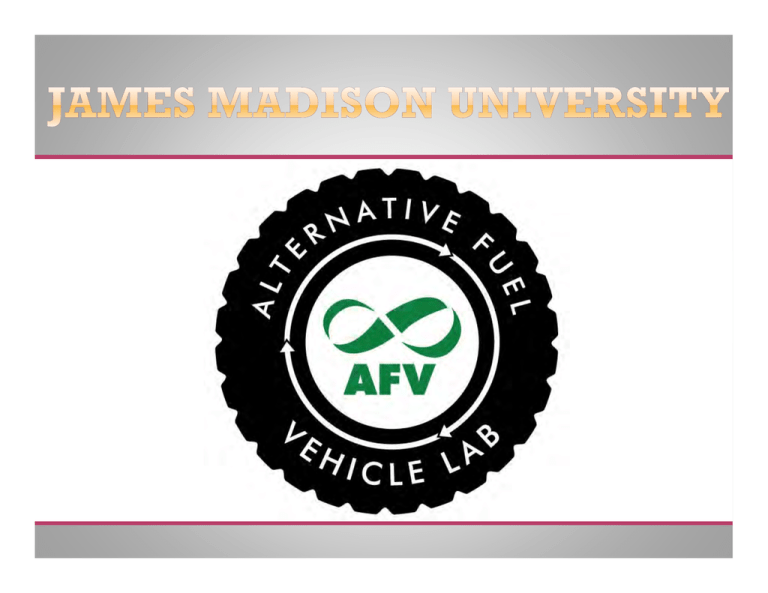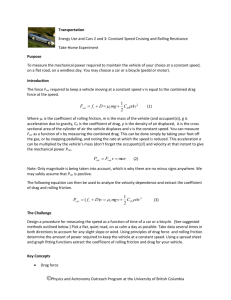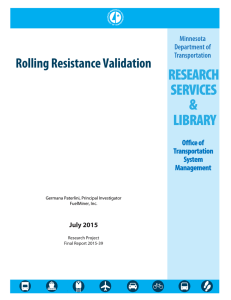Document 12031022
advertisement

Assistant Professor, School of Engineering, James Madison University Ph.D. (2005): Mechanical Engineering, Virginia Tech Industry (6 yr) Visteon, Inc Perceptron, Inc M.S. (1996) Mechanical Engineering, University of Virginia Magnetic bearings Optical strain and temperature measurement B.S. (1993) Mechanical Engineering, Michigan Tech Why electric vehicle projects have good potential as student projects Review of recent JMU Alternative Fuel Vehicle Lab electric vehicle projects More depth on JMU electric motorcycle project Familiar with media coverage of energy and transportation issues Global warming – energy conservation Global conflict – energy security Consider electric vehicle projects as a way to contribute Develop an appreciation for electrical energy trade-offs Reward knowledge and skills in a wide range of engineering subject matter areas Mechanical | | | Vehicle dynamics Mechanical power transmission Welding/fabricating Electrical | | | | Motors Batteries Controllers Wiring/panel building Relevant Readily linked to contemporary societal concerns Require to students mind and body Design and build Provide students with a significantly complex system to work with Mechanical Electrical Electric-Assist Bicycles Electric “Utility” Truck Electric Motorcycles 1968 Sears Catalog High level of student engagement competition Authentic experience Arbitrary rules notwithstanding External assessment and critique | | Technical inspection Competitor norms of craftsmanship and behavior Performance metrics are tightly specified Makes good media Promotes student work Positive feedback loop for student engagement Basic fabrication and assembly skills Electrical Vehicle DC soldering and wiring dynamics fundamentals motor and controller characteristics Battery behavior Where: P = total power v = velocity of the vehicle FR = force due to rolling resistance FD = force due to drag FG = force due to gradient flat course FA = force due to acceleration Ignore for now Where: FR = force due to rolling resistance W = weight of vehicle fR = rolling coefficient Where: FD = force due to vehicle drag p = air pressure v = velocity CD = coefficient of drag A = Frontal area of the vehicle Power Rolling Resistance Drag Power Required at Speed Total Power Rolling Resistance Air Drag 10000 9000 8000 Power (Watts) 7000 Power 6000 5000 Rolling Resistance Drag 4000 3000 2000 1000 0 0 10 20 30 40 MPH 50 60 70 80 6’5” 230 lb 5’7” 165 lb April 2009: Ernie Vaupel rides first electric motorcycle to race at ECTA: 53.458 MPH October 2009, JMU Team sets new ECTA record: 70.175 MPH





